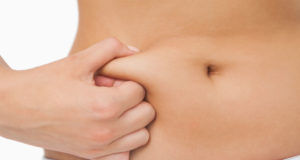If you’ve walked through the cereal aisle at your local supermarket recently, you might have noticed that many cereals take pains to advertise their high fiber content. The reason for this strategy is obvious – cereal producers are simply trying to take advantage of fiber’s sterling reputation. The benefits of fiber are numerous, and can help defend your body against a number of common threats.
Unfortunately, most people don’t get nearly enough fiber, and are ill-informed about which food possess this invaluable nutrient. Don’t feel bad if you fall into this category; foods with fiber are easy to find, and can serve as the cornerstone for a delicious meal.
Why Fiber is so Good for You
The benefits of some popular nutrients are fairly well-known. For example, people commonly associate vitamin D with stronger bones and vitamin C with formidable immune systems. In contrast, many consumers are unaware of why fiber is good for the body. If you are wondering why fiber receives so much praise from doctors and dieticians, take a gander at the list below:
More Consistent Bowel Movements – Yes, the inner workings of your digestive system don’t really make for enticing reading, but this part of your body still warrants attention nonetheless. A good number of people suffer from loose and watery bowel movements. In many cases, this problem can be at least partially traced to a fiber-deficient diet. Once inside the intestinal tract, fiber works to enlarge and solidify waste products, allowing the body to purge such material in a smoother fashion.
Prevents Other Digestive Problems – Like every other part of the body, the intestinal tract is vulnerable to disease and damage. Two examples of such problems include hemorrhoids (a particularly nasty condition in which veins in the anus and rectum swell in size) and diverticular disease, which causes the colon to become inflamed and infected. Studies have linked increased fiber consumption with a lower incidence of both ailments.
Lowers Your Level of Bad Cholesterol – Everyone seems to be concerned about cholesterol, and rightfully so, since high levels of bad cholesterol often lead to heart attacks and strokes. Diets rich in soluble fiber (a type of fiber that dissolves in water) have been shown to reduce the amount of LDL cholesterol in test subjects. As an added bonus, studies have also found that fiber can lower blood pressure levels.
Reduces Glucose Levels in the Bloodstream – Nearly 26 million people in the United States have diabetes, a disease in which the bloodstream is stricken with an excessive amount of blood sugar (glucose). Approximately 90 to 95 percent of these cases are classified as type 2 diabetes. This form of diabetes occurs when glucose stops being absorbed by insulin, the hormone used by the body to regulate its blood sugar levels. Diabetics are frequently advised to eat foods with fiber, as this nutrient can enable the body to absorb more glucose from its bloodstream.
Promotes a Thinner Waistline – Fiber assists with weight loss, though not just in the way you might think. While it is true that high-fiber foods are often low in calories and saturated fat, they also require more effort to chew and swallow. By slowing down the rate at which you eat your meal, fiber gives your body more time to recognize that your appetite has been satisfied. In turn, the stomach tells your brain to stop craving food, causing your desire for food to dissipate.
Increasing Your Fiber Intake
It’s not hard to get your hands on fiber, which is commonly found in fruits, vegetables and whole grains. When shopping for fiber-rich foods, however, you’ll probably wonder how much fiber you should you eat on a daily basis. The answer to that question is pretty straightforward. Thanks to the following dietary guidelines, it should only take a few seconds to determine your daily fiber intake.
Men under the age of 50: 38 grams per day
Women under the age of 50: 25 grams per day
Men aged 51 and older: 30 grams
Women aged 51 and older: 21 grams
If you haven’t been getting enough fiber, the proceeding guidelines should help you make some positive dietary changes.
Replace Orange Juice with an Actual Orange – A medium sized orange makes for a great addition to your breakfast; it’s an excellent source of vitamin C and contains 3 grams of fiber. Orange juice keeps much of the vitamin C, but loses all of the fiber.
Swap White Rice for Brown – What’s the difference between white and brown rice, aside from a change in color palette? About three grams of fiber; one cup of brown rice has four, whereas white rice only has one.
When Buying Bread, Pick Whole Grain – As with rice, the differences between white and whole grain bread aren’t limited to just appearances. Through the grain refining process, white bread is stripped of nearly all of its fiber content. In comparison, a slice of whole grain bread will net you 2 to 3 grams of fiber.
When Buying Pasta, Pick Whole Grain – Different food, same story. While white pasta usually has little fiber to speak of, a cup of whole wheat spaghetti has about 25% (6 grams) of the fiber you need daily.
Tame Your Sweet Tooth – In many offices, you’ll find dishes full of sugary treats available to all employees. While such snacks are appealing to the taste buds, they are usually devoid of nutritional value and loaded with unhealthy ingredients. Instead of raiding the candy dish during your coffee brake, bring a bag of almonds to work. One half cup of almonds features six grams of fiber, and is a great source of vitamin E, manganese and riboflavin to boot. If almonds aren’t your thing, other fiber-rich nuts include pistachios, walnuts and pecans.
Eat Oatmeal for Breakfast – It’s not that big of a shocker that oatmeal, one of the most well-known grain products at the supermarket, is brimming with fiber (one cup nourishes the body to the tune of roughly 4 grams). What you probably didn’t know is that oatmeal is an underrated source of protein. Each cup of oatmeal contains about six grams of this muscle-building ingredient.
Learn The Lingo Of Labels – Ever wonder what qualifies a cereal as being a “good source” or “rich in/high in” fiber? Well, cereals have to meet actual standards in order to earn such praise. To be a “good source” of fiber, a product’s serving size must contribute 10% towards an adult’s recommended daily allowance of fiber. This works out to roughly 2.5 grams. A food that seeks to be “rich” in fiber has to aim a bit higher, as 5 grams per serving are needed to achieve this label.
Another Reason to Eat Fruits and Veggies – The benefits of fruits and veggies are too numerous to do justice in a single paragraph. Suffice to say, both food groups supply your body with a bevy of crucial nutrients, not the least of which includes fiber. Some high-fiber vegetables include carrots, cauliflower and broccoli – in fact, the fiber in broccoli is visible in its stalk. When it comes to fruits, your best bets are apples, bananas and berries. Make sure not to remove the peels of items like cucumbers and apples, since the skins of these foods contain large amounts of fiber.
 Natural Knowledge 24/7 Educate yourself with nutrition, health and fitness knowledge.
Natural Knowledge 24/7 Educate yourself with nutrition, health and fitness knowledge.






